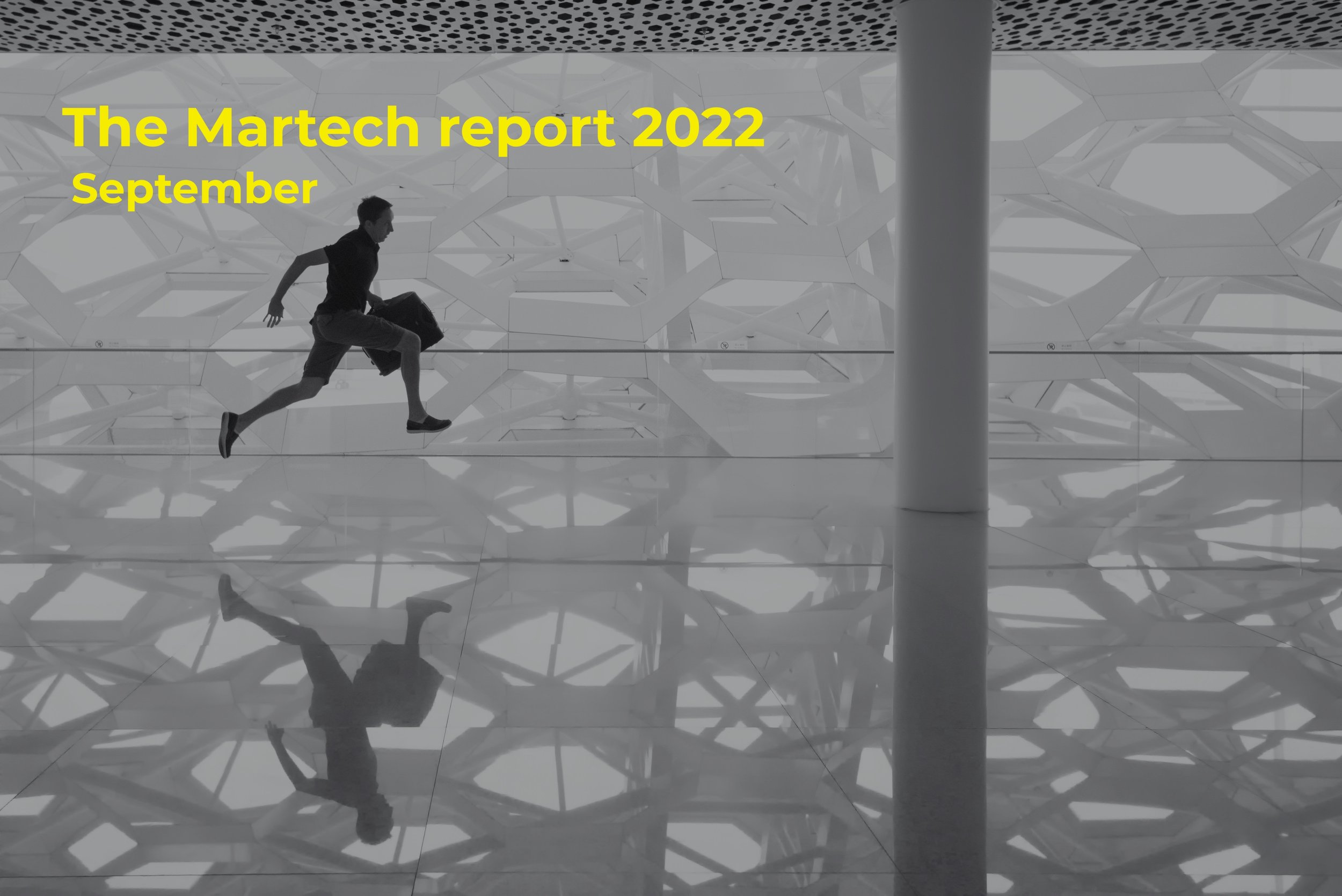The invited keynote speakers were Pernilla Jonsson, Head of Consumer & IndustryLab at Ericsson Research, Ann-Sofie Isaksson, Consumer & Customer Insight Manager at Ikea Inka Group, and Jonathan Chippindale, co-founder and CEO of Holition.
Ann-Sofie and Pernilla started the inspiring seminar by talking about their collaborative think tank - and shopping in the internet of senses. Beyond seeing and hearing, it seems the Internet of Senses may define the next chapter in 5G-enabled online experiences - and transform the way we think about marketing.
Next up on the virtual stage was Jonathan Chippindale, Co-founder and CEO of Holition, who talked about a new field; the anthropological study of the relationship between humans and digital-era technology. Jonathan talked about the importance of balancing technology and the human touch when designing customer experiences. While we should always think digital, it could sometimes be wise to deliver analogue. In terms of marketing, Jonathan argued that marketers must understand long term trends and use technology wisely - always from a consumer point of view and based on consumer insights. Ask yourself: is it actually useful for the customer or is it just for you?
See the presentations here:
SUMMARY OF THE ERICSSON & IKEA PRESENTATION
Pernilla Jonsson, Head of Consumer & IndustryLab at Ericsson Research, and Ann-Sofie Isaksson, Consumer & Customer Insight Manager at Ikea Inka Group, started the inspiring webinar by talking about their collaborative think tank - and shopping on the internet of senses.
It seems the Internet of Senses (mind, smell, sight, taste, touch, and sound) may define the next chapter in 5G-enabled online experiences - and that the 5G technology itself is materialising dreams with the internet of senses. Their shared vision is that advanced technology will enable a full internet of senses by 2025, and include the ability to digitally communicate thoughts by 2030. Many people believe that wearables are the future - with benefits such as instant translations, allowing us to control our sound environment and experience smell, taste, textures, and temperature digitally.
To make this happen we need hyper-fast connectivity, and unnoticeable and advanced automation, and of course consumers that are open to that kind of technology. Exponential technological forces such as IoT, Ai, Cloud, Robotisation, new computing paradigms, and ubiquitous connectivity will in different setups create new kinds of technology journeys of which “the internet of senses” is one. The internet of senses will, according to Pernilla and Ann-Sofie, open up to a world of possibilities within retail, and now si the time to identify what those possibilities are.
Pernilla also emphasised that there’s a difference between buying and shopping and that it’s thus important to identify where the customer is in his or her shopping journey. While many people love to shop, most people do not like to buy necessities. Just think about everything that we HAVE to buy, stuff like toilet paper, milk, canned goods, pasta, and rice; the essentials. Now imagine that this could be fully automated. You’d no longer have to buy the “boring stuff”, this would be taken care of with the help of Ai and tech. Ai could even help you make the “right choice” based on your preferences and needs - and perhaps you yourself would be left with choosing the right Ai for your preferences. Now, obviously, this would change the retailer - customer relationship - and as an effect, it would also transform the way we think about marketing.
The customer will be more in charge of how they spend their time so WHY should they invest their time with your brand? Pernilla and Ann-Sofie suggest that it’s time to stop thinking about pushing brand content. Instead focus should be on delivering the right value at the right time. The Internet of senses would allow this on a much deeper level. Let’s take an example; you’re the CMO of a restaurant chain that serves healthy fast food for busy city people and you want to connect with your target group with the right value at the right time. You’ve got all the five senses to help strengthen your marketing offering. What would you do? Send the smell of your delicious soup as they head out for lunch, perhaps? Or what would you do?
The consumer & IndustryLab at Ericsson has identified 10 Hot Consumer Trends that are probably worth keeping an eye on – and lending an ear to (and many of them got to do with the internet of senses).
Your brain is the user interface - The lines between “thinking” and “doing” will blur. By 2030, technology is set to respond to our thoughts, and even share them with other people. The implication is that our thoughts will be fully accessible by technology. As Ericsson so cleverly put it on their “10 hot Consumer Trends 2030” report: "Think what that will mean; think, and that will mean”. This could ultimately mean the end for any user interfaces for any digital device and opens up for new device categories with entirely new interaction paradigms. It also opens up for many new capabilities with applications that are almost unimaginable today - but what if these applications become part of our new normal? According to Pernilla Jonsson, consumers have already shown interest in thought communication before: in Ericsson’s 2015 trend report, more than two-thirds optimistically believed this would be commonplace already by 2020. So, what will be the new business model in 2030? This is a subject in need of some serious thought.
Sound - Technology will change how we listen, speak and understand each other. Going forward, people expect to be even more in control of how their voices come across in any language. The quality of sound will also make digital and physical experiences equally natural, meaning that digital objects placed in the physical world would actually sound totally real. It could also enable people to hear only what they want, for example, while on a crowded bus.
Taste - Babies learn about an object by instinctively putting it in their mouths. If you think back to your childhood you will almost certainly remember the taste of certain treats. Our taste buds create powerful and personal experiences. Imagine if these were digitalised. Imagine putting a device in your mouth that would digitally enhance the food you eat. How would you use that in your marketing efforts?
Smell - Car manufacturers always make sure that their cars smell new because that’s what consumers expect - and the scent is even described as pleasant by some. These fumes are generally attributed to mixtures of many different chemicals off-gassing and to plasticisers although their vapor pressures are very low and are not considered volatile. It’s clear that smell is a physical sensation that affects us directly and deeply. While it’s currently next to impossible to convey it digitally this is all expected to change. It’s easy to imagine that the experience of watching any type of video stream would feel more immersive if you could also smell the aromas.
Touch - Digital touch is set to grow beyond the rumble of your game controller or the haptic feedback of VR systems or racing sim gear. Digital touch will be something that affects the whole body and not just your hands as is the case today. The potential is limitless - The ability to feel digital textures might go way beyond the limitations of the smartphone screen. But why stop at the narrow borders set by physical touch? We might even be able to feel things beyond the human senses.
Digiphysical experiences & merged reality - Say goodbye to off-line/online. On the one hand, digital objects will become part of physical reality - AR glasses already allow you to place digital objects anywhere in such high quality that they look completely real. On the other hand, physical reality will become as short-lived as digital data. AR glasses could let you see through any material.
Verified as real - When technology can mimic and manipulate our senses, how will we know what is real and what is fake? Internet of senses could advance to the point where physical and digital realities merge into one. In a world full of avatars, being verified as a human could be a real game-changer.
Post-Privacy Consumers - In a future where data is all around, consumers could see regulation and transparency as a way to resolve privacy concerns.
Connected sustainability - Digital technology is at a tipping point as it can be used to either rapidly transform our economic systems, or to screw up the environment even further. Many people think that the internet of senses-based services will make society more environmentally sustainable. One benefit could be the continued transition to higher consumption of digital experiences over physical products.
Sensational services - Current screen-based experiences can be transformed into multi-sensory ones that are practically inseparable from physical reality.
Much remains to be said and considered about the social and personal implications of a full internet of senses – but we hope we have inspired some thoughts.






